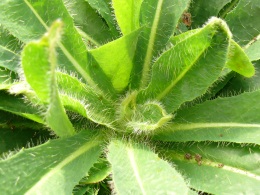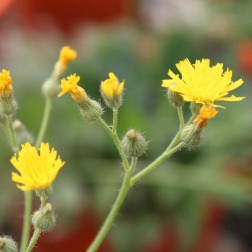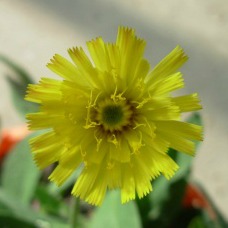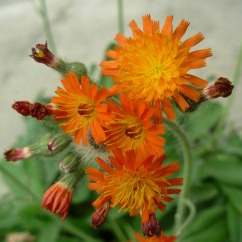Hawkweed

Hawkweed (Pilosella or Hieracium species) is a State prohibited weed.
Note: The scientific name for some hawkweeds has been changed from Hieracium to Pilosella. We continue to refer to Hieracium as this is the name listed in the legislation.
If you find hawkweed
If you think you have seen hawkweed, please contact us by:
- completing this form
- calling our Customer Service Centre on 136 186
- emailing weed.spotters@agriculture.vic.gov.au
Please do not attempt to treat or dispose of this weed yourself. We will treat, remove and dispose of hawkweed safely, at no cost to the land owner.
Why you must report hawkweed
Hawkweeds are perennial herbs native to Europe. They are aggressive spreading weeds in:
- the USA
- Britain
- Canada
- New Zealand.
Hawkweeds could cause significant harm to ecosystems in Victoria's high country, through restricting the growth of neighbouring plants by releasing chemicals into the soil.
This results in native plants being replaced with a dense mat or monoculture of hawkweeds.
Hawkweeds can spread quickly by seeds that are carried in the wind, they also spread from stolons (above-ground runners) and root fragments.

Hawkweed in Victoria
There are hundreds of hawkweed species worldwide, but none are native to Australia.
Hawkweeds have also been found and removed from gardens around Victoria as a legacy of trade, before their declaration as a State prohibited weed in 2003.
These plants are hawkweeds. There are 3 declared species of hawkweed in Victoria: the orange hawkweed, the mouse-ear hawkweed and the king devil hawkweed.
Hawkweeds all have green leaves with fine hairs on them and they grow in a rosette close to the ground.
The stems have a milky sap and they also are covered in those same spikey fine hairs.
All hawkweeds flower in summer. Orange hawkweed has orange flowers that grow in clusters, mouse-ear hawkweed has yellow flowers that grow as a single flower at the end of the stem and king devil hawkweed, although we don't have flowers here, also have a yellow flower.
All hawkweeds have fibrous creeping rhizomes and stolons like a strawberry plant. When these make contact with the ground they can produce roots. This is true for all three species.
These plants grow in the cooler area of Victoria, including in the alpine region.
Identifying hawkweed
Hawkweeds are small herbs with daisy-like flowers.
Hawkweeds have very hairy green leaves up to 150mm long arranged in a rosette close to the ground.

The stems contain milky sap and are covered in stiff bristly hairs.
There are 3 species in Victoria.
King devil hawkweed (Hieracium praealtum or Pilosella piloselloides) has yellow flowers with square-ended petals that are 20mm across and occur in clusters of up to 25 flower heads per stem.

Mouse-ear hawkweed (Hieracium pilosella or Pilosella officinarum) has a yellow flower with square-ended petals of 30mm across, with a solitary flower on each stem.

Orange hawkweed (Hieracium aurantiacum or Pilosella aurantiaca) has bright orange flowers with square-ended petals that are up to 15mm across and arranged in clusters of 5 to 30 flower heads per stem.

It is important to note that the orange, dandelion-type flowers of orange hawkweed are very unusual, especially clustered together in flower heads.
Orange Hawkweed 3D model
The New South Wales Department of Primary Industries have developed 3D (three-dimensional) models to help people become more familiar with prohibited invasive plants, including orange hawkweed, by providing a life like representation.
The model can be manipulated and inspected at every angle and magnification and is a great way to become more familiar with orange hawkweed.
© Regional NSW through NSW DPI Invasive Species Biosecurity. Model created by Rachel Klyve.
Explore 3D ModelLookalike species
There are some species that look similar to hawkweeds:
- Smooth hawksbeard (Crepis capillaris) is similar, but the stems are erect and smooth, unlike hawkweed species.
- Cat's ear or flatweed (Hypochaeris radicata) usually only has a single flower per stalk.
- The common dandelion can also be mistaken as hawkweed, however the common dandelion is hairless and has a single flower per stalk.